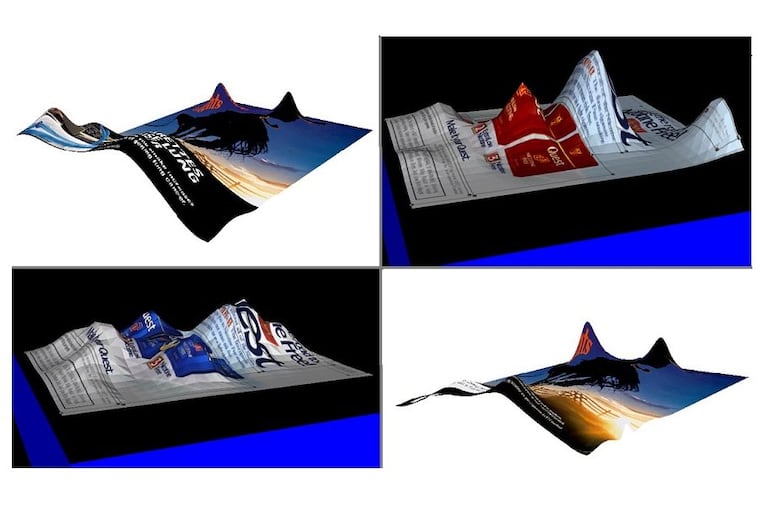Penn, Rutgers receive $18M to study effects of tobacco product advertising
Researches from the University of Pennsylvania and Rutgers University have received an $18 million federal grant to study the effects of tobacco product advertising and packaging on perceptions of healthiness.

When light cigarettes — so named for their less pronounced flavor — were introduced in the 1950s, the tobacco industry marketed them as a healthier option.
Since then, it has been well-documented that light cigarettes are no safer than regular cigarettes, but the myth persists, said Andrew Strasser, director of the Biobehavioral Smoking Laboratory at the University of Pennsylvania.
Now as the U.S. Food and Drug Administration looks to reduce the amount of nicotine in cigarettes to lessen the potential for addiction, researchers such as Strasser are trying to prevent a repeat of the light-cigarette myth. They worry that if the rule is enacted, tobacco companies might market the new products as healthier and subsequently increase the number of smokers through the billions of dollars they spend each year on cigarette advertising and promotions.
"We're trying to get out ahead of the policy being brought into law," Strasser said, "and avoid some of the past mistakes that happened."
Strasser, along with Cristine Delnevo, director of the Center for Tobacco Studies at Rutgers University, is starting a five-year multipronged research endeavor to study the effects of tobacco product advertising and packaging on perceptions of healthfulness. The two received an $18 million federal grant, announced this month.
They are one of nine groups to receive funding from the Tobacco Center of Regulatory Science, a partnership between the National Institutes of Health and the FDA to promote research on tobacco regulations. The center chose 14 groups for its first round of awards in 2013.
According to the U.S. Centers for Disease Control and Prevention, smoking is the leading preventable cause of death, accounting for about one in five U.S. deaths. The FDA has the authority to regulate marketing and packaging of tobacco products to mitigate public harm, but it must have evidence to support its actions. "It's paramount that we're able to extend that evidence base," Delnevo said.
Over the next five years, Strasser and Delnevo will focus on four core projects.
The first is a clinical trial on how people perceive low-nicotine cigarettes and what health effects they produce. These type of cigarettes are not on the market yet, but would become standard if the FDA enacts the new rule, Strasser said.
The second project focuses on how marketing of low-nicotine products might create false beliefs, and how those beliefs can be corrected. It will be studied in part by tracking eye movement when people look at advertisements.
"It's not the case that people look at everything in the same order and for the same amount of time," Strasser said. Using infrared cameras, researchers can track which words and images people look at the longest, where their eyes return repeatedly, and more.
In his previous work, Strasser found that people didn't look at warning labels placed at the bottom of cigarette ads. As a result, many falsely believed that certain products were safer or could help them quit smoking. But when the warning was placed in the body of the ads, where people spent the most time looking, they came away with more accurate knowledge. Now researchers will see whether the same principles apply for low nicotine product ads.
The third project will examine how the packaging of cigarillos — short, narrow cigars — affect the way young adults think about them. Cigarillos have become increasingly popular among youth nationally and in Philadelphia — a trend many attribute to their colorful packaging and candy flavors.
"We're particularly interested in what color communicates to consumers," Delnevo said. "It might be communicating taste and flavor, but it could also be how harsh or easy it is to smoke." This could make youth see them as less harmful, she added.
The fourth project will focus on Natural American Spirit cigarettes, a brand that markets itself as pure and natural, and is popular among young people. One of their ads shows just a tobacco leaf and a drop of water, emphasizing that there are no additives. "We want to see how young consumers perceive this product," Delnevo said. "Do they think it is safer than other products? Because it's not."
The projects will not address e-cigarette products, such as Juuls, which have received increased attention in recent weeks for their growing popularity among youth and first-time smokers. FDA Commissioner Scott Gottlieb has called youth vaping an epidemic, and has ordered the manufacturers of e-cigarettes to show how they will restrict sales to minors or risk having their sales restricted by government regulation.
But the researchers said they're focusing on cigarettes and cigarillos because they still make up the majority of the market. "There is still a lot of work to be done on the combustible products side of the equation," Delnevo said.